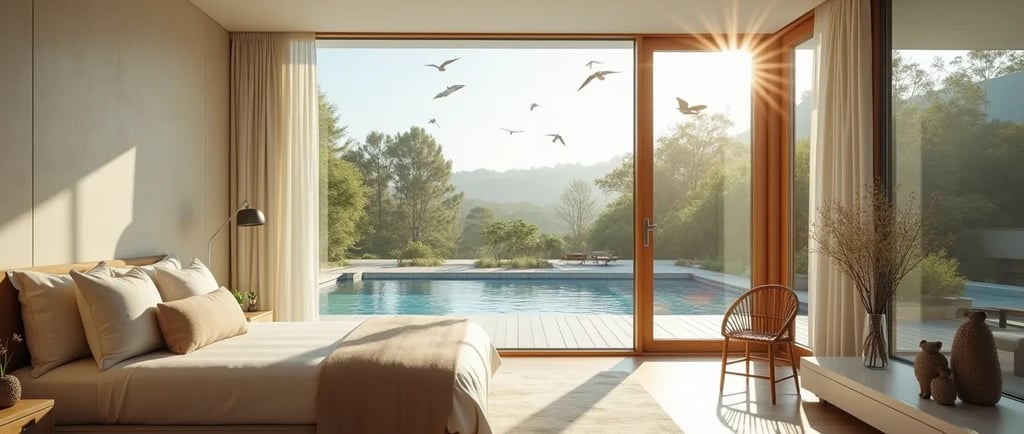We’re Not Getting Enough Sunlight — And Our Buildings Might Be to Blame
If you’re designing or building homes and not thinking about how natural light affects sleep, mood, and wellbeing — it’s time to start. This isn’t just about aesthetics or energy efficiency. It’s about biology. I’ve pulled together some thoughts on how architecture can better support our circadian rhythms — especially in residential design, where people spend so much of their lives.
5/14/20253 min read


We design homes to protect, comfort, and inspire — but too often, we forget to ask whether they support our biology.
Natural light is our primary synchronizer. It’s the signal our brains use to align with the 24-hour day. When we get it — especially in the morning — we feel alert, sleep better, and think more clearly. When we don’t, things slowly start to slide. Energy levels, mental health, sleep quality — all quietly affected by the absence of something we evolved to depend on.
And yet, most people today spend close to 90% of their time indoors.
So what does this mean for architects? For builders? For developers? If we're designing places where people will spend most of their lives, we need to get serious about daylight — not just in terms of aesthetics, but as a health-supporting design parameter.
This applies to everyone, but it matters especially for those more vulnerable to circadian disruption: kids, shift workers, people with chronic conditions, and anyone living with limited access to the outdoors. That includes many residents in urban apartments and family homes — not just institutional settings.
Design that respects the body clock
Morning light exposure (ideally before 10am) helps advance our circadian rhythm. That means it prompts earlier melatonin release in the evening, which supports restful sleep. Evening light delays this process, which is why screen use and artificial lighting at night can be so disruptive.
But this isn’t just theory — we can design for it:
Orient bedrooms to the east, so people wake with natural light and start their day in sync.
Program communal and living spaces where people spend their daytime hours to receive good daylight, especially in the morning and midday.
Think seasonally. In Brisbane, we get plenty of sunlight year-round — but its angle changes. Designing with solar orientation in mind means homes can benefit from warmth and light in winter, without overheating in summer.
Be careful with glazing choices. Tinted glass, deep overhangs, and over-shading can protect from glare, but they also reduce the daylight we need to stay healthy.
Create transition zones — areas like entryways, verandas, or hallways — that help shift occupants gradually between light levels. These spaces reduce light shock and help regulate biological rhythms.
It’s not just about sunlight
While vitamin D deficiency is still surprisingly prevalent in Australia — especially in the southern states — it’s also a marker for broader indoor living patterns. In winter, deficiency rates rise to 49% in places like Victoria and the ACT, compared to around 15% in Queensland. That doesn’t mean Queensland homes always get it right — but it does mean we have more opportunity.
Even brief exposures to natural light — 5 to 15 minutes of midday sunlight — can make a difference. So can the design of courtyards, balconies, and outdoor rooms that invite people outside, even for short periods.
What this means for private residential design
Much of the conversation around circadian design focuses on workplaces, hospitals, or aged care. But these principles are equally important in homes.
Homes are where we begin and end the day. Where we recover. Where our kids grow. The quality of light we experience there shapes not only our comfort, but our biology. And it’s something we can plan for — not just with bigger windows, but with better thinking.
We don’t need to flood every room with daylight. We need to be intentional. To prioritise the spaces and times that matter most. And to remember that orientation, layout, shading, and glazing are not just design moves — they’re health decisions too.
References:
CSIRO – Vitamin D and health in Australia
Sleep Health Foundation – Light and Sleep
Harvard Health Publishing – Resetting Your Circadian Rhythm
NHMRC – Nutrient Reference Values for Australia and New Zealand
The Conversation – Australians aren’t getting enough vitamin D – even in summer
Would you want these sunlight and circadian design principles applied in the house you live in now?


